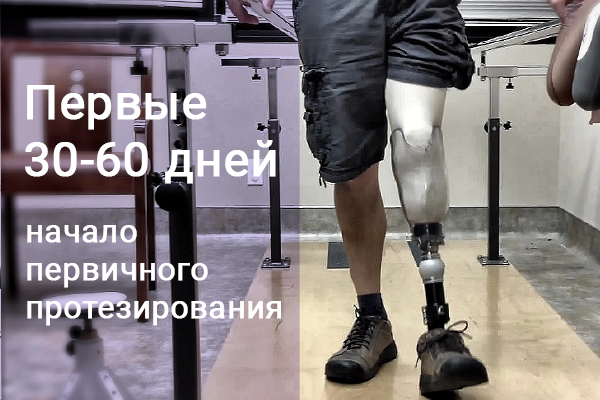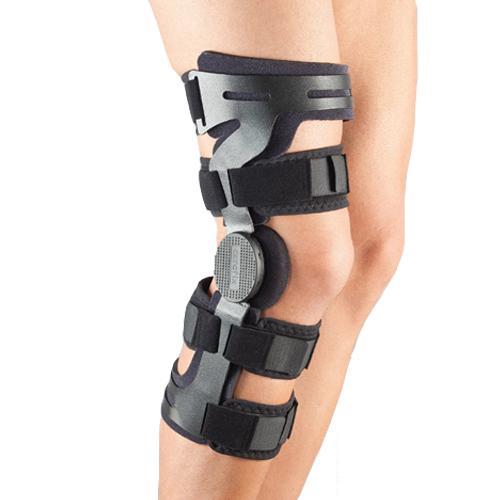In the OrthoReal prosthesis laboratory, the prostheses are made individually for each patient. We approach each individual patient responsibly and with full understanding of our work. Every OrthoReal patient has a different story. Someone was ill for years so that their leg had to be amputated to save their life. Others have lost their leg unexpectedly, through an accident or work injury. Each case is unique, so a prosthesis is made for each patient, taking into account their physiology, age and activity level.

- Scoliologic.ru
- We will contact you soon
- Early prosthetics – the key to success!
- Lower limb prosthesis
- If you have questions or difficulties applying for prosthesis reimbursement:
- Preoperative preparation
- Methods of fastening prostheses and special features of their construction
- Types of lower limb prostheses
- What is the difference between modular and non-modular prostheses?
- Learning to walk with a hip prosthesis
- How to speed up the learning process?
- Custom cosmetic customization
- Technological Developments
- HOW DO I GET A PROSTHESIS AFTER AN AMPUTATION?
- Preparation for prosthetics
- reduction in edema
- position of the stump
- Comfort and secure fit of the prosthesis
- Services provided by the Ottobock prosthetics and orthotics studio
Scoliologic.ru
Comfortable – Thanks to the unique materials of the acetabular inserts, they are suitable for long-term, daily wear with the highest level of residual limb comfort
Esthetic – The design and the choice of material for the cosmetic acetabular cup insert is developed individually in consultation with the user
Functional – Our specialists will find you the most suitable modules with the functions you need so that your prosthesis meets your mobility and sports needs.
most modern – Our team of doctors and technicians manufactures prostheses from the highest quality and most modern materials and modules. Manufacturing technologies such as 3D scanning, printing and precision robotic turning of the prosthetic socket are used.
Reliable – All modules and materials used are certified, the prosthesis goes through a multi-stage quality control according to European standards.

We will contact you soon
Less restriction of mobility: the user can mobilize for short distances within his house or apartment with the help of additional aids (walker, crutches, etc.) or with the help of an external person. Difficult to put on and check the prosthesis.
Limited mobility in the outside world: The patient moves with the prosthesis on a flat surface without additional support. Duration and range of movement are moderately restricted. The patient is able to put on the prosthesis independently. The steering of the prosthesis is moderate.
Unrestricted mobility in the outside world: The user is able to move with the prosthesis at different speeds and easily overcome obstacles. He is able to do significant physical work in the home or in industry with his legs. Compared to healthy people, the patient's walking time and range of motion are only slightly restricted.
Unrestricted mobility in the outside world with increased demands on a prosthesis: the patient can move safely with a prosthesis. The duration and extent of movement are not restricted. Excellent control of the prosthesis. Due to the intensive use of the prosthesis and the increased functional requirements, the demands on the design of the prosthesis are increasing (increased reliability of the components and their dynamic activity, secure anchoring of the prosthesis and increased damping functions).
Early prosthetics – the key to success!
The prosthesis should be fitted within the first 30-60 days after the operation!
This prevents the formation of contractures and muscle atony of the residual limb. The risk of a worsening of chronic diseases is drastically reduced and a positive emotional perspective is created for further rehabilitation.
Prolonging this process can lead to limitations in the use of the prosthesis in the future.



Lower limb prosthesis
This is the initial phase of prosthesis fitting. The primary, therapeutic prosthesis is a training prosthesis for the patient. It is used to correctly shape the residual limb and to learn to walk with the prosthesis.
The modular prosthesis is the standard of modern prosthetics. A leg prosthesis composed of different modules makes it possible to supplement the function of the lost limb as much as possible. The modules used can be mechanical or microprocessor-controlled and, depending on the version, work pneumatically, hydraulically or mechanically. The combination of modules in the prosthesis allows the patient to move with relative ease and maintain stability.
The earlier a child gets a prosthesis, the easier it is to learn to steer. Pediatric prostheses have their own characteristics and difficulties. Children outgrow their dentures very quickly and may need to change them twice a year.
These prostheses are specially designed for bathing. All modules are protected against water with special hydrophobic elements, so all bathing operations are possible.
Sports prostheses are made for people who lead an active lifestyle and want to continue playing sports.
These prostheses are made from high-strength materials derived from space technology and utilizing the latest advances in neuroscience and biomechanics.
The most technologically advanced and expensive prostheses. Their functionality is ensured by a processor that stabilizes the patient's gait, allowing him to quickly accelerate from step to run, overcoming obstacles. This type of prosthesis is programmed individually for the patient. The external power supply itself needs regular recharging, and the modules need servicing when the time comes.
If you have questions or difficulties applying for prosthesis reimbursement:
IPR (Individual Rehabilitation Program) or Certificate No. 088/u-06, Pension Receipt - send a request from our website for a consultation with an orthopedic technician, in a phone call or a personal visit, we will try to help you solve many problems in avoiding communication with government agencies facilitate the collection of an accurate set of documents for prosthetic cost compensation under the government target program of the Department of Labor and Social Security. Call us on +7 (495) 225-08-16 and we will help you: Competently issue an IPR Collect a set of documents for prosthesis reimbursement Get you the money you need for your prosthesis have paid to refund in full.
- Preoperative preparation of the patient
- Amputation of a lower limb
- Early postoperative period
- Preparation for fitting a prosthesis
- prostheses
- Learning to walk with a prosthesis (walking school)
- Integration of the amputee into society: reestablishing communication with the family and role in society; Restoring emotional balance, developing healthy strategies, pastimes and hobbies, etc.
- Vocational rehabilitation: vocational assessment and retraining, assessment of further training needs or change in working conditions.
- Aftercare: Ongoing prosthetic care, rehabilitation and medical observation and examination; emotional support.
Preoperative preparation
Preoperative preparation consists of explaining to the patient the reason and necessity of the amputation and answering any questions that may arise, such as: B.
At this stage, the medical preparation of the patient for the operation also takes place: first determination of the degree of amputation of the lower limbs according to the medical indication and the clinical situation, correction of pharmacological treatment, necessary diagnostics, consultation of specialists according to today's treatment standards, description the prospects and possibilities of lower limb prostheses.
Methods of fastening prostheses and special features of their construction
The most important part of a prosthetic leg is the acetabulum. The safety and ease of use of the prosthesis depend on it. The acetabulum can be attached to the residual limb in a number of ways.
If there are no complications with the prosthesis, the method of vacuum fixation is advantageous. With this method, the acetabular cup material is in direct contact with the skin of the residual limb. This enables easy handling.
Another method of fixation is the use of a polymer sleeve. It is attached to the residual limb and then connected to the prosthesis. This type of fixation is stable and secure. In some cases, the fixation can also be done with a splint sleeve and a half-shell.
Various joints are used in the construction of lower limb prostheses. These can be knee, hip or ankle joints, but also simple mechanical joints and complex electronic joints controlled by a microprocessor.
Types of lower limb prostheses
Modern prostheses for the lower limbs enable people to lead a normal life again despite their disability. These can be purchased from Prometr.
Different prostheses are used depending on the part of the leg (or legs) that is amputated. Thus, leg prostheses can be designed for different joints: ankle, knee, hip.

What is the difference between modular and non-modular prostheses?
From all of this we can conclude: prostheses are different in every respect. The only thing they have in common is the desire to improve the user's quality of life.
There are requirements for prostheses that cannot be overlooked:
- A comfortable and comfortable shaft. The socket is custom made and its quality depends on the skill of the prosthetist;
- Durable and lightweight materials;
- Warranty and post-warranty service;
- A construction resistant to external influences (mechanical and climatic);
- Long lifetime.
When comparing modular and non-modular prostheses, it is important to pay attention to the technical characteristics of the products.
- Availability of functional options. Modular prostheses adapt to gait speed, overcoming obstacles and natural movements. Non-modular prostheses are designed for a lower-intensity lifestyle, where there is no need to quicken the step, quickly change direction, etc;
- With modular systems, one can swap out components and improve the mechanism, while this is not possible with non-modular systems;
Everyone has the right to choose their own path. At OrthoReal, we are always ready to support you.
Learning to walk with a hip prosthesis

The technique for learning to walk with a hip prosthesis is the same as with a prosthetic tibia. You will learn to use the knee module and get used to the artificial foot. Additional difficulties can arise when the amputation is performed with a hip disarticulation.
In this case, another module, the hip module, is attached to the prosthesis. This represents an additional burden when learning how to use the prosthesis. The training can be divided into three main parts:
- maintaining a stable and balanced stance;
- Mastery of coordinated rhythmic walking with the hip prosthesis;
- Overcoming obstacles such as uneven and curved surfaces, stairs, curbs, etc.
How to speed up the learning process?
In order to master the product faster, more intelligently and thus more effectively, we recommend a training and coaching program in our specialized Ortho-Real walking school. Under the caring care of an orthotist or rehabilitation therapist, you'll get back on your feet faster and get back to your daily activities. The school has the necessary equipment for this.
The first steps on a prosthesis always require a firm grip and careful instructions. Beams, crutches and canes can be used. Of course, the prosthetist is always at the patient's side to monitor and accompany the process. He provides assistance, advice, corrects mistakes and teaches how to walk properly with the prosthesis, distribute the load evenly and not overload certain parts of the body.
The support of a qualified specialist creates trust and strengthens motivation. Gradually, the patient begins to independently take steps and perform exercises without help. Regularity is the key to successfully learning to walk with a prosthesis.
Training is considered successful when the person is able to walk several kilometers with the prosthesis without resting. You should not feel any fatigue or significant discomfort in your body. The appearance of the stump should not change significantly either.
Custom cosmetic customization
Do you lead an active lifestyle? Constantly in motion? We offer you a special cosmetic cover so that you feel comfortable and your prosthetic components are reliably protected.
The cosmetic disguise is a geometric replica of the surviving stump that is digitally crafted. The rear portion of the fairing is quick detachable and attached with magnets so it can be easily removed for loading the knee module.
A knee module cover can be used at the bending point for the C-Leg and Genium knee modules. This protects clothing from being pinched and contributes to the natural and aesthetic appearance of the prosthesis.
Technological Developments
In medical technology, further developments in prosthetics are based on approximating natural movement processes. Natural human movement is difficult to simulate, but today's technology allows prostheses to perform many important functions: you regain your mobility and you can go about your daily life unaided. With a prosthesis, you avoid postural and balance problems that can result from the lower weight of the amputated leg.
For maximum safety and comfort, an optimal fit of the residual limb socket is particularly important. It must create a secure connection between the residual limb and the prosthesis. Ottobock offers a wide range of insole materials and adjustment options to offer you maximum comfort in your prosthesis.
The success of your prosthetic fitting depends on many factors, including functionality, quality of fit and important factors such as your desire and motivation. At the Ottobock workshop, we take a holistic approach and offer you individual support from each member of the rehabilitation team. Our technical know-how not only includes our extensive product portfolio, but also individual product customization and a quality assurance system that ensures that you are fully satisfied with the functionality of your prosthesis. In addition to the functionality of your prosthesis, your comfort is also very important to us. Your prosthesis should not only look natural, it should also help you to perform movements that are as harmonious and natural as possible.
HOW DO I GET A PROSTHESIS AFTER AN AMPUTATION?
- 1 Come to us for a consultation and examination. After the consultation, you will receive a document – an act of the Medical Technical Commission (MTC). The MTC Law describes the Technical Rehabilitation Equipment (RTW) you need and which is provided by the state – Russian Labor Ministry Order No. 888n of 2018.
- 2 Contact your local health center to get a referral for a Medico-Social Assessment (MSE). Transfer form: 088u-06, valid for 1 month from the date of issue.
Ensure that the following technical rehabilitation tools (RTF) are included in the IPRA in the technical rehabilitation section (for prosthodontists):
Preparation for prosthetics
Rehabilitation and preparation for prosthetics should begin once the scars have healed. The residual limb must be prepared for walking with a prosthesis.
Caring for the residual limb, eliminating swelling, eliminating contractures, restoring sensitivity, restoring the functioning of all body systems, preparing the patient's muscles for early verticalization - all this must be started on time and carried out correctly. This significantly shortens recovery time and ensures successful early prosthetic rehabilitation.
reduction in edema
The swelling of the residual limb after an amputation is a normal reaction of the body to the operation.
It usually resolves itself within a few weeks. Moderate residual limb bandaging and residual limb positioning in relation to the trunk can speed the reduction of swelling. The dressing must be applied correctly and the patient must be trained in applying hospital dressings. Incorrect bandaging can lead to damage. Bandaging should be done as instructed and under medical supervision. The hospital will also advise on the correct position of the residual limb.
position of the stump
During your hospital stay, the exercises should be adapted to your overall situation. Movement therapy is used to maintain muscle tone and joint mobility. A comfortable and pain-free residual limb position is not always appropriate.
Do not keep the residual limb in a flexed position for long periods of time. It is important that the hip joint does not develop contractures. For example, for transfemoral amputations, it is recommended to lie on your stomach for 30 minutes two to three times a day. The head should be turned to the opposite side of the amputation. This position stretches the hip flexors and maintains range of motion in the joint. It is recommended to sleep on a firm mattress as this prevents pelvic flexion in the supine position.
A wheelchair may be required initially after the amputation. It is important that the seat of the chair is rigid. This also prevents excessive flexion of the residual limb and prevents spinal deformities.
Comfort and secure fit of the prosthesis
Different residual limb shapes and activity levels lead to different loads on the residual limb. During active treatment with a prosthesis, the residual limb can be damaged by movements in the socket of the residual limb. Liners are used to create a secure connection between the residual limb and the prosthesis.
With the right type of liner, you can significantly increase your walking comfort.
Services provided by the Ottobock prosthetics and orthotics studio
The specialists at the Ottobock prosthetics and orthopedic technology studio concentrate on restoring your freedom of movement. We know your needs and expectations and we know how important it is to be able to move freely. That's why we use all our knowledge to improve your quality of life and maximize your comfort. Find out more about prosthetics, orthotics and rehabilitation in the Ottobock workshop in Russia.
Prosthetics in the Ottobock workshop
The prosthetics in the Ottobock workshop are based on an individual concept that takes into account the special features of the individual limbs.
Prosthetics in the Ottobock workshop
Prosthetics has become an integral part of the rehabilitation process for people with disabilities suffering from orthopedic and neurological diseases.
Prosthetic gait training is a series of post-amputation activities and exercises aimed at strengthening the muscles of the body and forming a correct gait.
Read more:- prosthetic leg.
- Modern leg prostheses.
- blunt.
- The reamputation is.
- Life after a leg amputation.
- prosthetic foot.
- Leg prosthesis below the knee.
- acetabulum.
